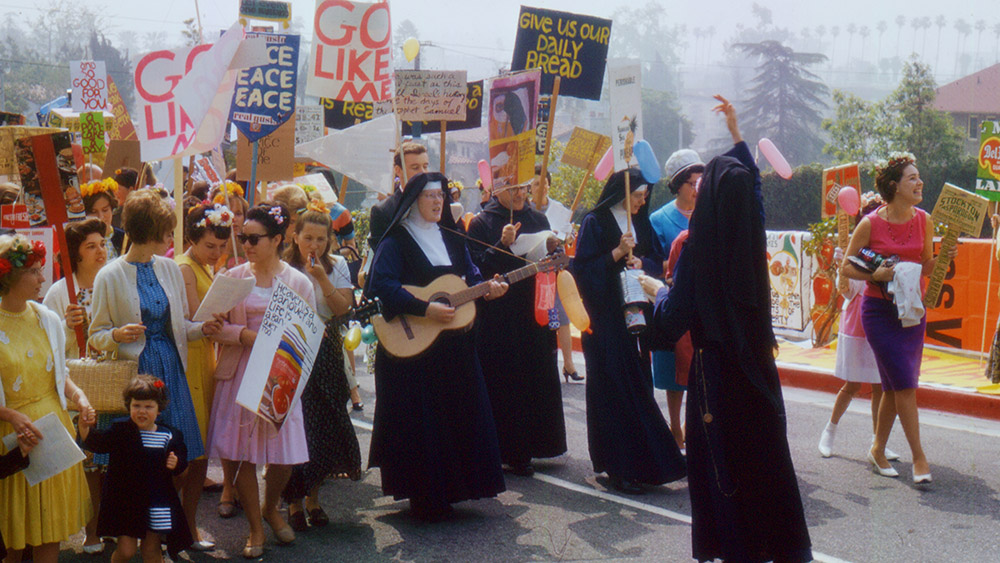
(Unsplash/Georg Eiermann)
In 2015, the delegates of the National Religious Vocation Conference made the following statement regarding vocations in the United States:
Some religious institutes receive several newer members, some receive members sporadically, and others receive none at all. There are some newly founded congregations that seem to be attracting multiple candidates as opposed to the more established orders.
A lack of newer entrants, the aging and diminishment of membership, and the strains of maintaining current ministerial commitments can limit a congregation's vitality, creativity, and ability to risk in beginning newer ministerial initiatives.
Leaders often wonder whether they should promote new entrants and explore newer ministries at all. Perhaps they question the strength of their institute. Elder care has become tough in communities with fewer caregivers who themselves are not young. Through my interactions with sisters, I've learned that new members of a community feel frustrated if they are obliged to look after the aged, perform heavy tasks, and worry about repairing and maintaining huge buildings. They also feel wary of taking on leadership roles.
Are these institutes losing their viriditas and approaching a state of ariditas as their members grow older and fewer individuals express interest in religious life? Is God's green finger in the founding charism still touching the traditions, lives and ministries of these communities? Could we expect a breakthrough?
Fertile spirituality vs. barren religiosity?
"I'm spiritual and not religious" has turned into a catchphrase among Catholics today, and it needs to be taken seriously if we expect religious life to survive or flourish.
Though religiosity, when healthy, is also a form of spirituality, people today find themselves trapped in a web of ariditas because of spiritual worldliness in the church. They seem to desire to quench their thirst for God from deeper fonts of holistic healing and down-to-earth spirituality, even while lifting their eyes toward the horizon of eternity. Thus, we need a new paradigm in the vocation ministry.
Charismatic and institutional dimensions
Over the years, during my communications with discerners, religious, and ex-religious men and women, I've realized how the paradoxical tension between the charismatic and institutional dimensions of celibate life paths in the Catholic Church impacted their contentment or dissatisfaction.
Owing to changes in the vocational scenario, after reading this article, some vocation directors may be inclined to identify the charismatic dimension with viriditas and the institutional with ariditas. However, in my view, discernment is required in the present-day situation not only concerning viriditas and ariditas but also between good and bad viriditas.
Advertisement
Due to influences of Western philosophy, leaders in the Church tend to adopt an "either-or" approach to the charismatic and institutional (as well as virtual and nonvirtual) aspects of Christian life. However, St. Hildegard's spirituality of viriditas is different because it suggests a "both-and" or non-dualistic vision of faith life.
In the words of the Vatican document Iuvenescit Ecclesia, "The antithesis between an institutional Church of the Judeo-Christian type and a charismatic Church of the Pauline type, affirmed by certain reductive ecclesial interpretations, in reality lacks a foundation in the texts of the New Testament."
Nostalgia about the past
Some religious feel nostalgic about the glorious past of their establishments while others struggle to see the significance of their founding charism in the contemporary church and world. This reflects trends in the universal church about the Christian faith itself.
So, where's the problem? I consider it not a problem but a mystery to be lived.
Much discernment is needed in understanding the past and present of religious life in America. Booming numbers of vocations in the past could have been either good or bad viriditas. Similarly, any rise or decline in the figures today could suggest either viriditas or ariditas — depending upon whether their members are growing in holiness to become mystics and prophets!

(Wikimedia Commons/USFS Region 5)
Social injustices
Ariditas could be the outcome of discrimination, racism, spiritual or sexual abuse, and the abuse of power or conscience within any community of consecrated life. In Veil of Silence: Abuse, Violence, Frustrations in Female Religious Life, Salvatore Cernuzio describes these issues with 11 examples or traumatic experiences in religious life.
Ariditas is also seen in exploitation of the poor and marginalized in various contexts. It has long-term implications. Bringing in young vocations from other parts of the world could be ariditas or viriditas depending upon the motivations of these individuals as well as the genuineness of their religious institutes.
Prophetism
During the process of communitarian discernment and decision-taking, we look for fruits of the Holy Spirit, including "peace." But peace doesn't imply the absence of disagreement or stirrings within the Christian community over an issue.
Any form of status quo in faith life could result in stagnation and lack of fruitfulness, a kind of ariditas. But during a time of crisis, if a community unites itself with the suffering, death and resurrection of Jesus Christ, its relationships take a qualitative leap in the spiritual life.
Viriditas inevitably impels mystics to become prophets. Here's the pertinent question: Is religious life in the United States shifting from active ministries to more depth in its contribution to the church through mysticism, which naturally leads to prophetism?
Vocation promotion
I know women in some parts of the country who lament that their bishops have stopped any form of vocation promotion completely and are unwilling to reconsider. In some dioceses, youth have never met religious brothers and sisters.
What is God's will in this situation? How do leaders in religious congregations discern about their next step? Should institutes opt for closure or embrace the new?
At the crossroads
In the past, rigid structures and bureaucratic controls by bishops and religious superiors helped in maintaining ministries like schools and hospitals. However, eventually religious life reached a crossroads in the United States.
This reminds me of "Rebel Hearts," a documentary on the Los Angeles Sisters of the Immaculate Heart of Mary who confronted patriarchy in the church five decades ago. Their story beautifully expresses both ariditas and viriditas in the church and its institutions in different contexts.

Immaculate Heart College Mary's Day celebration, 1964, seen in a still from the documentary "Rebel Hearts" (Courtesy of the Corita Art Center, Immaculate Heart Community, Los Angeles)
No charism can be ignored
The Holy Spirit never gives charisms to individual members to be extinguished in favor of the religious community's founding charism. However, I have come across many institutes where a person's charisms and talents are suppressed for the sake of a pseudo sense of self-denial or humility or to fulfill other pastoral needs of the church.
On the other hand, there are some institutes that seem to have forgotten their originating charism and have allowed their members to serve freely according to their own gifts.
What is God's will in this regard? Perhaps it would differ from one individual or institute to another and requires discernment.
Re-creation
The greenness of God's finger creates and re-creates consecrated life. This greenness does not create dichotomies between the old and new, institutional and charismatic, or sacred and secular. But how could institutes with aged members, who genuinely question the relevance of their charism in contemporary contexts, continue being a gift to the life of the church and world during their lifetime?
These are a few common viewpoints I've come across:
- Embracing new charisms is optional.
- Let the institute die gracefully.
- New forms of consecrated life are a threat.
- Let us return to the past with its structures.
- Let us share our charism with the laity.
- New vocations could bring freshness to our founding charism.
- Let us merge and form intervocational communities.
These perspectives are a mix of viriditas and ariditas. The spirituality of St. Hildegard could help leaders in their communitarian discernment on these points.
In short, consecrated life certainly is facing many questions in the third millennium. The coronavirus pandemic has also forced us to redefine our priorities, challenged traditional structures of religious life and ministries. However, viriditas seems to be a key to discernment in this scenario. It illumines our hearts and minds to penetrate the depths of the mystery.
Rising numbers in some new communities may not be a sure sign of good health, especially if their members lack integral formation. Numerical decline in others could surprisingly be a sign of these communities reaching healthy maturity in their consecrated life and mission toward the church and world. Both these realities need each other and could perhaps walk and work together in synodality.






